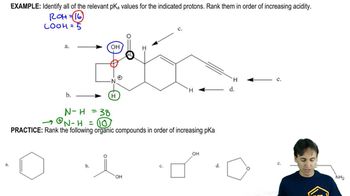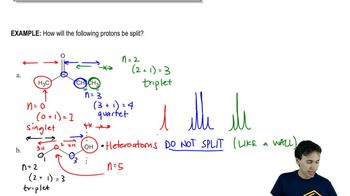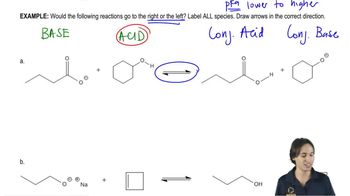For each of the following compounds, indicate the pH at which
a. 50% of the compound is in a form that possesses a charge.
1. CH3CH2COOH (pKa = 4.9)
2. CH3N+H3 (pKa = 10.7)
 Verified step by step guidance
Verified step by step guidance Verified video answer for a similar problem:
Verified video answer for a similar problem:



 1:46m
1:46mMaster Why we use pKa instead of pH. with a bite sized video explanation from Johnny
Start learning